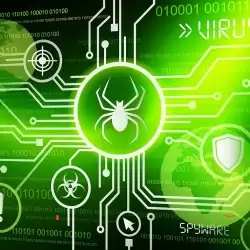What is IoT?
23-01-2023, 13:06
The development of "smart" technology leads to the endowment of atypical functionality for it, even refrigerators and vacuum cleaners go online. All this can create problems.

Recently, the concept of Internet Of Things has been actively developing, which involves embedding atypical functions in household appliances. Televisions, speakers, air conditioners, vacuum cleaners and even coffee makers and toothbrushes are equipped with wireless communication interfaces for remote activation, control and data transmission. The trend aimed at comfort and assistance in solving routine issues creates a number of cyber threats: hackers can intercept any information or biometric data of users. Moreover, many gadgets are stitched in such a way that collecting data about the owner, his activity, priorities and other things is part of their "duties". As practice shows, such data can "pop up" in the wrong hands in the most unexpected way.
A brush on wheels with an all-seeing eye
In the last days of the past year, the media reported on a case when pictures taken by a vacuum cleaner got into the network. The photos were mundane, though sometimes intimate, domestic scenes shot from low angles, including those that no one would want to publish on the Internet. In particularly "interesting" shots, a young woman in a pale purple T-shirt is sitting on the toilet, her shorts are pulled down to mid-thigh. Photos vary in type and sensitivity. In this series of video frames, the young woman's face was hidden in the main image, but was not hidden in the grainy scrolling of the frames below.
We have known for a long time that through our mobile phones, iPhones or, for example, smart TVs, you can learn a lot about us. So, a few years ago, a scandal broke out with Samsung TVs. It turned out that they can both eavesdrop and spy on the owners. Moreover, even when the TV is turned off. No one is surprised by the leaks of "naked photos" from the smartphones of the stars, but there are whole crowds of hackers "working" there. And then some kind of brush on wheels takes pictures of the hostess in the toilet and sends photos to no one knows where!
Mobile and therefore dangerous
The shots were taken with an iRobot Roomba J7 vacuum cleaner, and then they were leaked by employees of the company that marked photo and video data for artificial intelligence training. At the same time, they got into closed Facebook groups.
A "smart" vacuum cleaner, as it turns out, can turn from a harmless household appliance into a sneaky spy, because unlike most other appliances in the house, it is very mobile and can "tell" a lot. So, based on his movements around the house, he makes a detailed map of the dwelling, which can then go "to the side".
Such devices appeared on the market in 2001 and were much simpler than they are today. Modern advanced models are equipped with computer vision, which depends on high-definition cameras. According to MIT Technology Review experts, many companies use good front-facing cameras for this. This helps the devices to "see" the furniture in the room and the wires on the floor to successfully go around them. Robot vacuum cleaners get access to a huge amount of information thanks to powerful sensors, cameras and artificial intelligence. In addition, they can freely drive around the house, getting into any places and shooting anything.
Necessary explanations
The iRobot company admitted that their robot really took the picture, but not an ordinary model, but a modified one, which has never been on sale. The shots were made by vacuum cleaners participating in the testing program, and their owners (company employees or volunteers) knew that the device could record, and were rewarded for it.
The test robots contain software and hardware features that none of the models intended for consumers are equipped with, iRobot explained. However, they did not deny that ordinary devices collect some data and send it confidentially for analysis. This is necessary in order to improve the work of robots and the quality of cleaning.
Make sure that you are not followed
The more "smart" devices there are in the house, the higher the probability that attackers will use one of them to access other gadgets and personal data. Some manufacturers do not pay enough attention to protection or release raw products that contain certain vulnerabilities, code errors or flaws. Criminals can use them to get hold of user data or organize surveillance.
How to understand that the gadget is spying on the owner? You can guess by the strange activity of the device. For example, he may suddenly light up a light signal about the operation of the camera or sharply increase traffic consumption – in some cases, this indicates his compromise by third parties.
23-01-2023, 13:06
23-01-2023, 13:05
20-01-2023, 16:49


There are no comments
Information
Users of Visitor are not allowed to comment this publication.